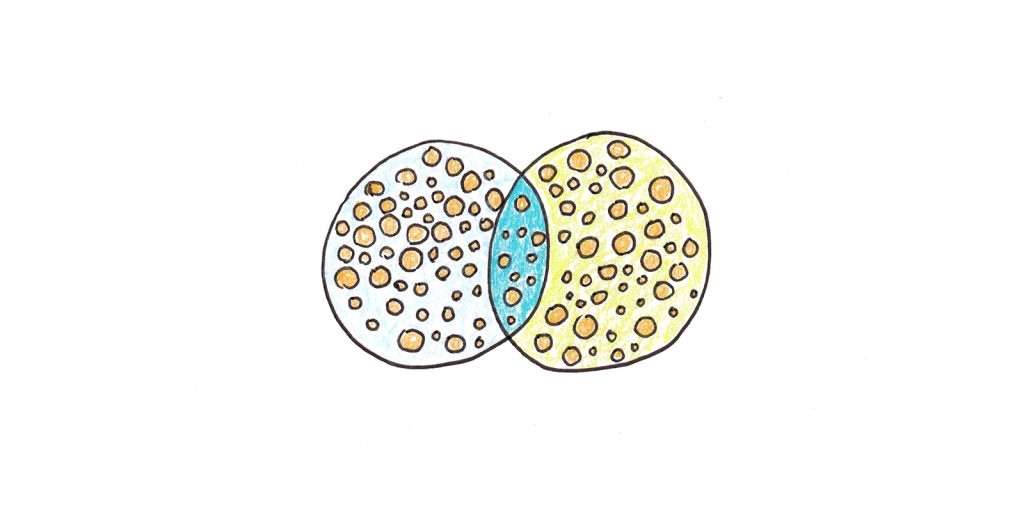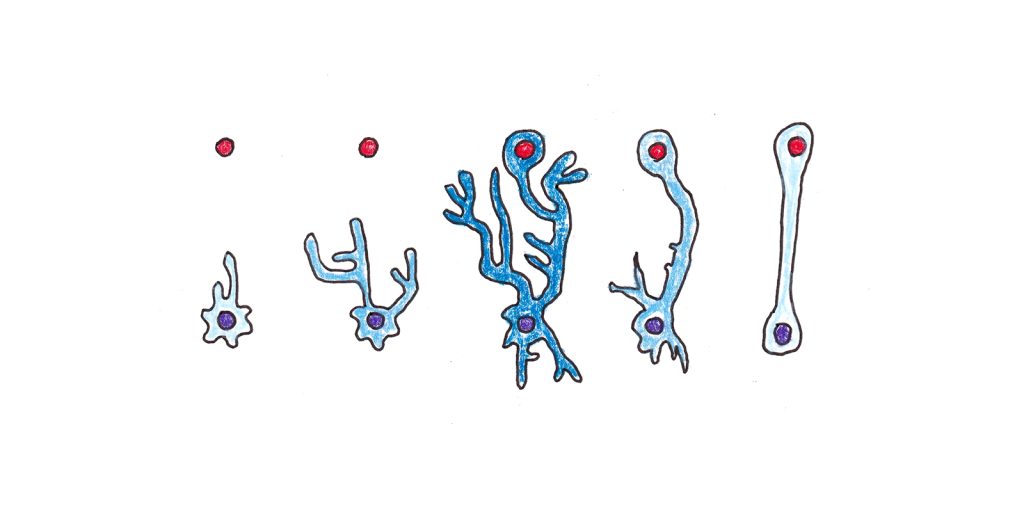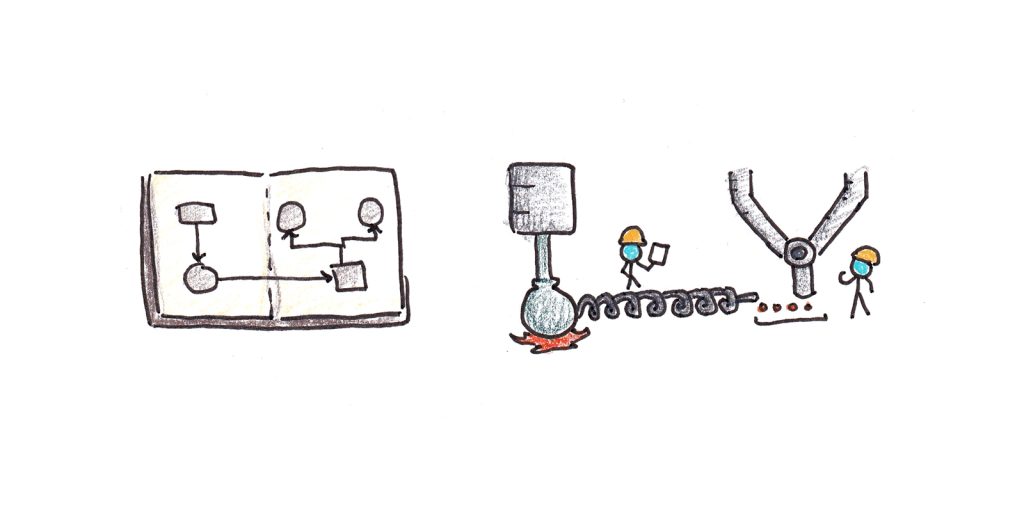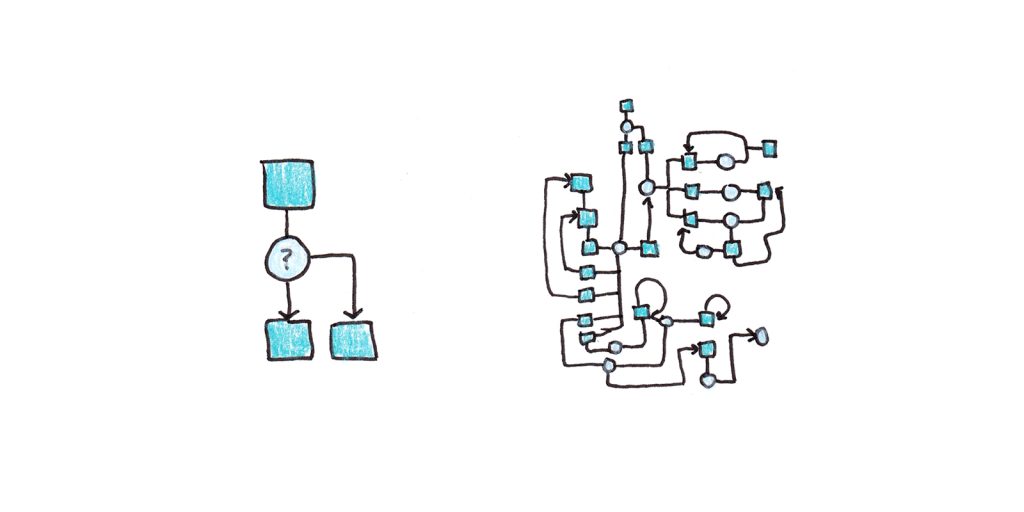Transfer occurs when learning one thing helps you learn or do something else. It’s arguably the most important issue in educational psychology. After all, we spend years in the classroom. One would hope the things we learn make us more productive on the job, conscientious as citizens or intelligent in our daily lives.
Yet it turns out the titular question is really difficult to answer. This is because the answer depends on three different questions, each of which is itself incredibly complicated:
- How do we perform skills?
- How do we acquire them?
- What sorts of skills are used in real life?
About two years ago, I started a research project to learn everything I could about transfer. It quickly became clear that understanding transfer depended on answering the other three questions, so my research broadened drastically.
Despite two years of research and a lot of writing about transfer (including a chapter of my book), I still don’t have a definitive answer for how much transfer we can expect. But I’d like to share at least how I’ve come to think about the issue.
Question One: How Do We Perform Skills?
Essentially, transfer is a product of overlap. We should expect transfer from one skill to another when something in those two skills is essentially the same.

Nearly every well-articulated theory of transfer is an overlap theory. What differs between theories is the “something” which potentially overlaps. Let’s consider some candidates:
- Broad mental faculties. In this framework, “reasoning” or “memory” overlap across different skills. This theory likens the mind to a muscle that can be strengthened through many types of practice. This would suggest transfer is quite broad and that almost any strenuous mental activity should produce benefits.
- Stimulus-response. Perhaps, per the behaviorists, the mind is merely a collection of habits, stimulus leading inevitably to response? This view would suggest transfer is extraordinarily limited—every superficial change in a situation would require a new skill.
- Propositions and productions. Theories like ACT-R argue that our brains store skills in essentially two forms: small chunks of factual knowledge and simple component procedures. Complex skills and knowledge are simply aggregates of these foundational pieces.
- Schemas. Schema-based theories claim that knowledge is organized in patterns larger than individual actions or chunks. These patterns roughly correspond to “templates” with both fixed and variable components. For instance, we might have a “birthday party” schema that includes birthday cake and presents, but only optionally clowns or pointy paper hats.
- Neural networks. The brain is made out of neurons, and we have some idea of how those neurons process information. Connectionist theories take these basic neuronal properties as a starting point and posit theories of learning based on them. Teasing out implications for transfer is harder here, but it would most likely look like an overlap in the synaptic connectivity between two skills.
- Activity systems. Perhaps transfer isn’t in our heads but is a property of our broader social and physical environments? In this view, the person relies on their environment to perform a skill, and transfer fails when those environmental supports are altered.
Only the first two seem to be demonstrably false. The mind is not like a muscle, nor is it a simplistic stimulus-response device.
I find the information-processing perspective of cognitive science to be the most persuasive. The mind is essentially computational (although quite different from computers made out of transistors). Answering the question of transfer depends on how the algorithms for skills are composed.
From this perspective, what seems safe to say is that skills can only reliably influence each other if they overlap in either their procedures or knowledge. If two skills don’t use the same process, and the knowledge they depend on is different, there shouldn’t be much (if any) transfer.1
Question Two: How Do We Acquire Skills?
How the mind represents skills is only one part of understanding transfer. There’s also the issue of how we acquire these representations.

Here, a few things seem pertinent:
- Expert-novice differences. Experts appear to represent ideas at a deeper level than novices. The most likely explanation is that skills become more abstract as we encounter more examples and learn to generalize and distinguish concepts.
- Automaticity effects. Skills tend to recede from conscious awareness with experience. There are many different proposed mechanisms for this in psychology, but a consequence seems to be that how the expert thinks they perform a skill may not fully capture what they’re actually doing.2
- Mnemonic effects. Another complication is that even if there is no overlap between two skills in expert performance, there might be an overlap at an earlier stage of acquisition. Vimla Patel has explored this in medical cognition. She comments on the finding that basic science tends to be used infrequently in clinical practice. However, that doesn’t mean learning basic science is useless for doctors because it forms a scaffolding for making sense of clinical knowledge, thus aiding in its acquisition.
- Declarative-to-procedural transitions. Another characteristic progression in learning is for skills to start as declarative knowledge—things we know and think about explicitly—and shift to procedural knowledge—actions we take automatically. This transformation implies that skills may have different patterns of transfer at different levels of mastery as their dominant mental representation changes.
- Cognitive load. Different training activities work better for different stages of skill acquisition and working memory capacity. Studying an example, for instance, is better than solving a problem when cognitive load is high, but the opposite is true when cognitive load is low. Efficiency of practice, then, is more than just a question of overlap but also of the stage of learning. Early on, drills, practice on component skills and structured lessons are more helpful. Later on, complex, realistic practice matters more.
On top of these psychological details, there’s the issue of pedagogy. There are often multiple methods for teaching something. Those methods have varying levels of generality and can apply to a broader or narrower range of concepts. Transfer, then, also depends on how something is taught.
My sense from reading this research is that there are a few pitfalls to avoid:
- Don’t judge transfer potential by the abilities of novices. Novices have a more superficial, context-bound understanding. That’s more indicative of their phase of skill acquisition than the ultimate potential for transfer.
- Don’t judge transfer on one-shot problem-solving tests. Problems often require many pieces of knowledge and procedures to solve correctly. Failure in the tested task could mean a complete failure of transfer, or it could mean that a person is 99% of the way there but still missing one piece. A better test is to train a person on task A, then on task B, and measure the time savings on B from the knowledge and skills acquired in A.
- Don’t trust experts’ perceptions of how they do a task. Experts are bad at introspecting their cognitive procedures. We tend to underrate knowledge we’ve already acquired, seeing it as obvious. The ease of automaticity fools us into thinking the complex skills we perform are simple. This can lead to an inappropriate devaluing of “basic” skills.
Question Three: How are Skills Used in Real Life?
The final question is about the kinds of cognitive activities people engage in during work, school and daily life.

While possibly the most relevant question of the three, it is also the hardest to answer. Few studies have looked systematically at the kinds of cognitive skills people regularly employ at work and at home.
Critics allege that much of what we learn in school has little real-world application.
John Anderson reports that employers either want very basic skills (which the educational system should already be teaching) or highly specific skills that no universal curriculum could aspire to. Similarly, Peter Cappelli argues that surveys show employers tend not to highly value academic skills.
Jean Lave found that the mathematics taught in school is rarely what people use in their daily routines.
Bryan Caplan argues that much of education is signaling—showing others we have smarts, conformity and work-ethic—rather than cultivating those abilities. From this perspective, the real purpose of schools is to sort people, not to teach useful skills. School knowledge doesn’t apply to real life, Caplan argues, because that’s not the function it serves in society.
Supporters of education argue that just because most skills aren’t used doesn’t mean they’re useless. We may become specialists of one sort or another, but unless we assign everyone a career at birth, we want to maintain maximum flexibility until our adult years. A side-effect of this desire to maintain flexibility is that we end up learning a lot that we don’t ever end up using, or that is insufficiently concrete to apply in practice without further training.
Similarly, education proponents point out that just because a skill isn’t used doesn’t mean it can’t be. Statistics is a powerful tool for reasoning about many important issues. The fact that people are statistically naive shows we should be teaching them more, not declaring it impotent!
Whether we apply a skill in a new context depends on the effort it requires. Practice can lower the effort of applying a skill in real life and create more situations where it is convenient to use. Imagine rewinding time to before widespread literacy; it would be perverse to argue that reading isn’t useful because most people don’t read.
My perspective is that, while many academic subjects aren’t used, it’s difficult to appreciate a subject until you learn it. Given that we generally cannot “infer” a domain of knowledge simply by encountering problems that apply it, this argument favors accumulating more knowledge than you think you’ll need.
Side Note: Transfer of Effort, Motivation and “Noncognitive” Skills
Thus far I’ve been looking at transfer through a cognitive lens. A somewhat separate issue is the transfer of things like the ability to focus and study for long periods of time, the ability to resist temptations, or the motivation to want to learn.
Many of the same arguments used above apply to noncognitive skills as well. There’s unlikely to be something like a general faculty you can improve with bulk training efforts for motivation, persistence or focus.
That said, the arguments about transfer here are somewhat different because these are not complex skills (in the information processing sense of “complex”). Sitting at your desk and focusing for eight hours may be difficult, but it’s not computationally demanding.
Thus while I think it’s ridiculous to imagine improving your memory by memorizing Latin verbs, it’s not ridiculous to imagine improving your ability to focus by regularly sitting down to focus. Believing that cognitive skills are highly specific, and should show limited transfer, is not logically incompatible with a more general transfer of effort or persistence.

I might write a fuller summary of my views later, but I want to clarify that while “speaking French” and “being able to focus” are both discussed as skills, they have a different locus of difficulty. French is hard because there are lots of words, grammar and mental processes you need to perform it. Focusing is hard because the naive reward center of your brain wants to go on Twitter instead.
Summarizing My Thoughts on Transfer
If you take one thing from this article, it should be that transfer is complicated.
As a practical takeaway, I would agree with roughly the following:
- Transfer should be minimal between unrelated skills.
- Transfer between related subjects depends on how much they overlap in content and procedures, with the caveat that those content and procedures may extend beyond what is traditionally thought of as the curriculum.3
- Academic subjects can transfer to real life, but this transfer can fail because:
- We are missing components of the skill for applying it. This can include “recognizing” when an academically learned skill applies (for instance, applying algebra to a real-life quantitative problem).
- We haven’t automated the skill enough to pass the cost-benefit threshold.
- We can’t actually perform the skill with only our academic ability.
- Many academic skills are inert, but they’re still potentially helpful for accelerating learning that builds upon them.
- All else being equal, practice on more cognitively similar tasks should maximize overlap and, thus, future transfer. However, there are important exceptions to this because of cognitive load, retrieval effects and overall difficulty. Therefore identifying the most beneficial practice activity may be more complicated than simply matching it with the activity you’re trying to get good at.4
Footnotes
- I’m leaving aside analogies. Analogies suggest two domains that have nothing to do with each other may actually be a source of transfer. But another way of saying this is that analogies suggest an abstract commonality between two superficially different domains. When analogies are useful, they tend to share an overlapping deep structure, so I would include them as an “overlap” theory, even if the overlap is an active process rather than the nature of the mental representations themselves.
- The science on reading seems relevant here: careful experimentation seems to indicate that fluent readers decode words letter-by-letter, even though we may feel like we recognize meaning holistically as we look at text.
- For instance, I tend to think learning Chinese will help with later learning Spanish, even though there is virtually no overlap in the vocabulary or syntax. Instead, what is transferred is a more abstract understanding of languages and how they are learned.
- This is a major misconception I had when I wrote my “do the real thing” piece.


 I'm a Wall Street Journal bestselling author, podcast host, computer programmer and an avid reader. Since 2006, I've published weekly essays on this website to help people like you learn and think better. My work has been featured in The New York Times, BBC, TEDx, Pocket, Business Insider and more. I don't promise I have all the answers, just a place to start.
I'm a Wall Street Journal bestselling author, podcast host, computer programmer and an avid reader. Since 2006, I've published weekly essays on this website to help people like you learn and think better. My work has been featured in The New York Times, BBC, TEDx, Pocket, Business Insider and more. I don't promise I have all the answers, just a place to start.